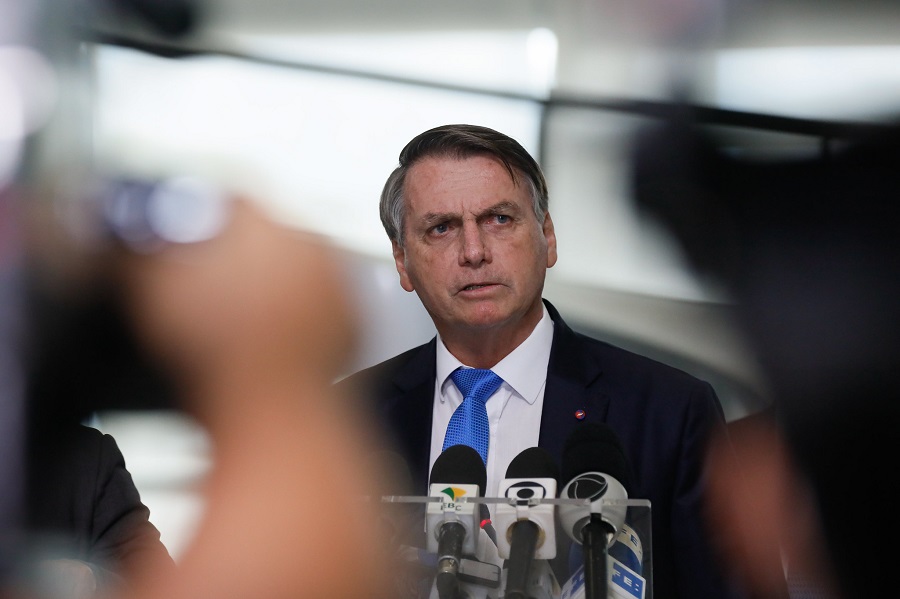RIO DE JANEIRO, BRAZIL – During his weekly live stream on social networks on Thursday night, August 26, the president classified the current energy crisis as a “serious problem.”
“The problem is serious. I am appealing to you at home right now. I am sure that you can turn off a light now. I am urging you to do this. This way you will be helping save energy and save water in hydroelectric plants,” he said.

The much lower than expected rainfall volume in recent months, compared to last year, has left hydroelectric reservoirs in Brazil’s center-south region at critical levels.
“In a large part, we are down to 10%, 15% of storage in these reservoirs. We are at the very limit. Some will stop working if the water crisis persists,” Bolsonaro added. Last Tuesday, the Electricity Sector Monitoring Committee (CMSE), headed by the Ministry of Mines and Energy, had alerted to the worsening water situation in Brazil.
ADDITIONAL DEMAND
On Thursday, the National Electric System Operator (ONS) reported that an additional production of energy will be required from October to meet the demand that cannot be supplied by hydroelectric plants.
The agency updated a technical note monitoring the conditions of the electricity sector until November and estimated that the additional amount of energy required will average 5.5 gigawatts (GWm) between September and November. The document emphasizes that the plants’ reservoirs are experiencing their worst water inflows in 91 years.
Among the ONS recommendations to meet this demand are the deferment of scheduled maintenance in thermoelectric plants, to prevent their shutdown; the importation of energy from Argentina and Uruguay; the guarantee of operational availability of private business thermoelectric plants; solution to legal issues related to supply availabilities of 5 thermoelectric plants (Goiania II, Campina Grande, Maracanaú, Palmeira de Goiás and Pernambuco III); the viability of a third regasification vessel, referring to the thermoelectric plants Termoceará, Fortaleza and Vale do Açu; the restoring of generation capacity impacted by the maintenance of Rota 1 in September; and the viability of GNA I thermal plant.
The ONS further pointed out that, as of September, new energy resources should be incorporated into the National Interconnected System (SIN).
To this end, the agency said it will be necessary to use additional generation from thermal plants without Variable Unitary Cost (CVU); to advance the Voluntary Demand Response Program; and to implement incentive initiatives for the population to voluntarily reduce its consumption; as well as to adopt new flexibilities in the minimum levels in the Ilha Solteira and Três Irmãos hydroelectric plants’ reservoirs, up to a 323-meter quota.
Authorizing flexibility in safety criteria from N-2 to N-1 was also suggested as a resource for energy and power supply; and adopting new temporary flow restrictions at the São Francisco and Itaipu hydro plants, which could add additional resources to power availability.

